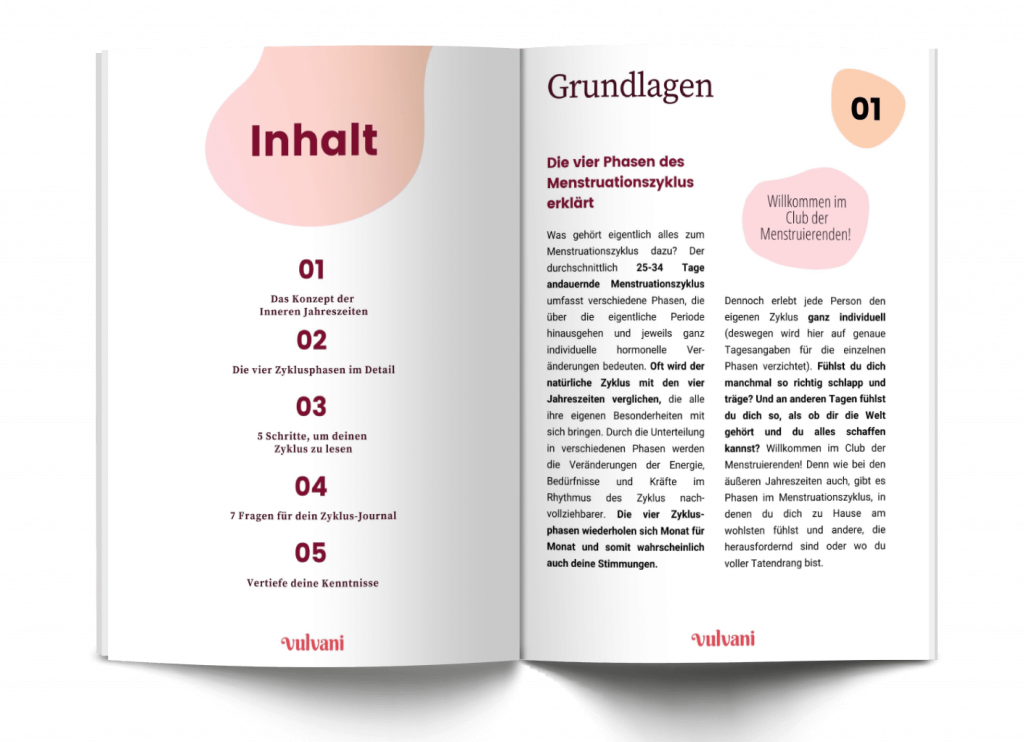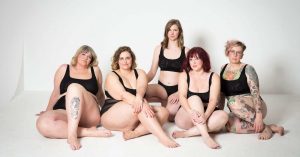
Discovering your menstruation as a spiritual practice
Yasmine understands her menstruation as a spiritual practice and shares in this interview how she is connecting more with her own body through cycle awareness.
Advertising is an important means of presenting and distributing various products to the public. But how is menstruation in advertising actually portrayed? Shouldn’t it be just as diverse, honest and versatile as the current society in 2021? Wrong! Sophia took a closer look at period advertising:
Have you ever noticed that menstruation is always depicted with blue blood in advertisements on TV? Do you bleed blue? Probably not. Most menstruators are more likely to find mucousy and light to dark red blood in their fully soaked pad instead of the blue, clinical fluid that TV commercials always present to us. Why is natural menstrual blood not shown in advertising? Because socially, it is still seen as something unpleasant and disgusting. It is not for nothing that the big brands for menstrual products advertise in TV commercials with catchwords like: “protection, freshness, cleanliness, freedom”. This implies that periods are something dangerous, smelly, dirty, and also mean restrictions and lack of freedom. Advertising wants us to understand that menstruators need menstrual products in order not to be at the mercy of this “danger”.
Have you also noticed that menstruation is very often represented in advertisements by young, pretty, thin cis women walking around with clear skin, bright smiles and little white dresses? First of all, do you wear white clothes on the first day of your menstruation, when the bleeding is particularly heavy? I think very few people dare to do that because, as we all know, it can go wrong. Blood is very difficult to wash out of white clothes! On the first day of your period, many menstruators also get skin problems and often have to deal with blemishes and a bloated belly. This is definitely not the time when menstruators feel like the ideal of beauty that we see every day in advertising.
Menstruation is also more diverse than the normative image of the thin, beautiful young woman would have us believe. There are much more diverse body images of menstruators, as well as all age groups. Very young or older people are never shown, although menarche can begin as early as eleven (or earlier) and many menstruators bleed monthly until their mid-forties. And anyway, why are only women shown? Even though most menstruators are women, non-binary people and trans men also menstruate. Shouldn’t advertising also support the visibility of these groups?

Menstruation is perceived as an obstacle in advertising and in our society in general. This is because menstruators often need rest during their period and feel less energy than during the other phases of the cycle. In the meritocracy in which we live it is seen as a “weakness”. Because of that advertising tries to make menstruating women believe that they can ignore their period with period products and that they will be able to perform completely again.
A relatively new Always advertisement is particularly exemplary of this phenomenon. The advertisement in question shows an energetic woman with strong arms, confidently and powerfully carrying out a moving day. She grabs hold and clears out the lorry with the heavy furniture. On the one hand, it’s really cool; the cliché image of femininity in the old advertisements of the petite woman jumping over flower meadows in a little white dress is not reproduced any further. The problematic thing, however, is that this woman says: “Whether I have my period or not, I always want to give 100 %! But I often don’t feel sufficiently protected,” and that’s where the Always Ultra is supposed to help.
So the advertising reproduces the image of the menstruating body that has to be suppressed, that still has to function. Even though at that moment it simply cannot function in a purely biological way as it would otherwise. This is highly problematic because this woman is set as the norm: She can clear out a heavy moving van despite her period. But this is not the norm and does not have to be. Shouldn’t the advertisements rather show a person reading a book in a relaxed way during her period, with a hot water bottle on her stomach and a tea in her hand?
In many cases, advertising plays on the fact that the greatest fear of all menstruators should be that their menstruation will be “discovered”. As if the biggest goal of menstruators is to pretend that they are not menstruating. Non-menstruating people are set as the norm. Menstruation is portrayed in advertising as a burden and “abnormality” that needs to be contained with menstrual products. As if menstruators were otherwise completely at the mercy of their periods.
We don’t have to feel at the mercy of our periods. It is neither dirty nor dangerous and one norm among many. Menstruation is part of our body and we can deal with it. Of course, period products make menstruating “easier” for many menstruators, but it is also possible without. Free bleeding is already a widespread practice, that lets us get closer to our bodies and our periods.
So don’t let the advertising fool you. The portrayal of menstruation in advertising is not realistic! Your period doesn’t have to be blue and clinical and smell like bathroom cleaner. You don’t have to be beaming with joy on the first day, you can also be annoyed and slumped on the sofa in baggy clothes. You don’t have to be dressed to the nines, you don’t have to wear a white dress and, above all, blemishes on your skin are perfectly normal during your period! There’s really no need to move on the first day of your period. You can take it easy. And above all, you don’t necessarily need menstrual products to survive. They are not your saviour in times of need, you are not at the mercy of your menstruation! So feel free to bleed freely and red and even in bed with chocolate in your jogging outfit!
You feel like reading more about the subject? Then I can recommend a scientific paper and two books:



Yasmine understands her menstruation as a spiritual practice and shares in this interview how she is connecting more with her own body through cycle awareness.

What options are there for male birth control? Ailsa delivers an overview of what is available now, and what may come in the future.

Sustainable underwear? The founders of TUKEA talk about fair labour conditions, body diversity and body literacy.
…and empower countless women to make empowered choices about their bodies!

